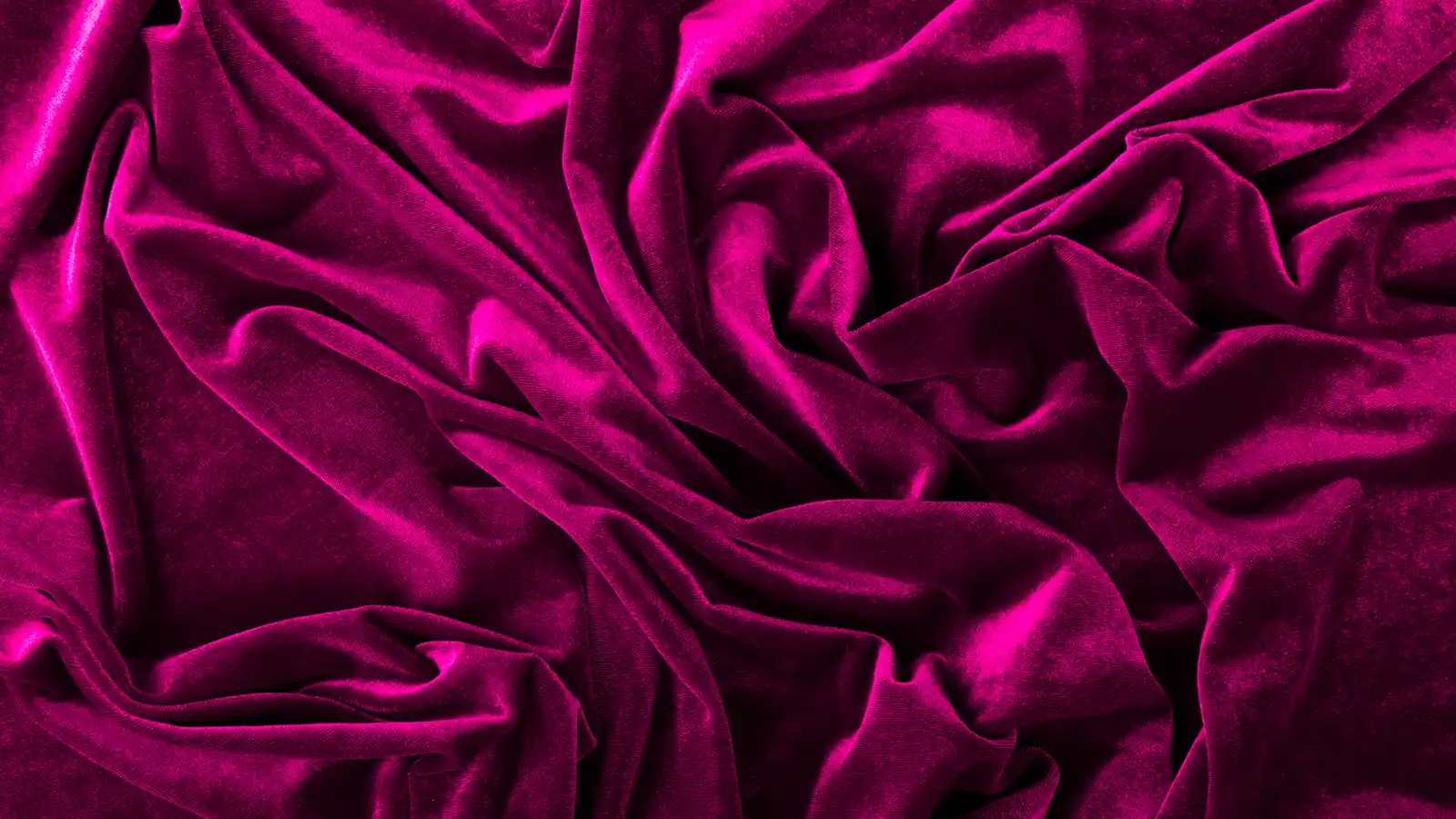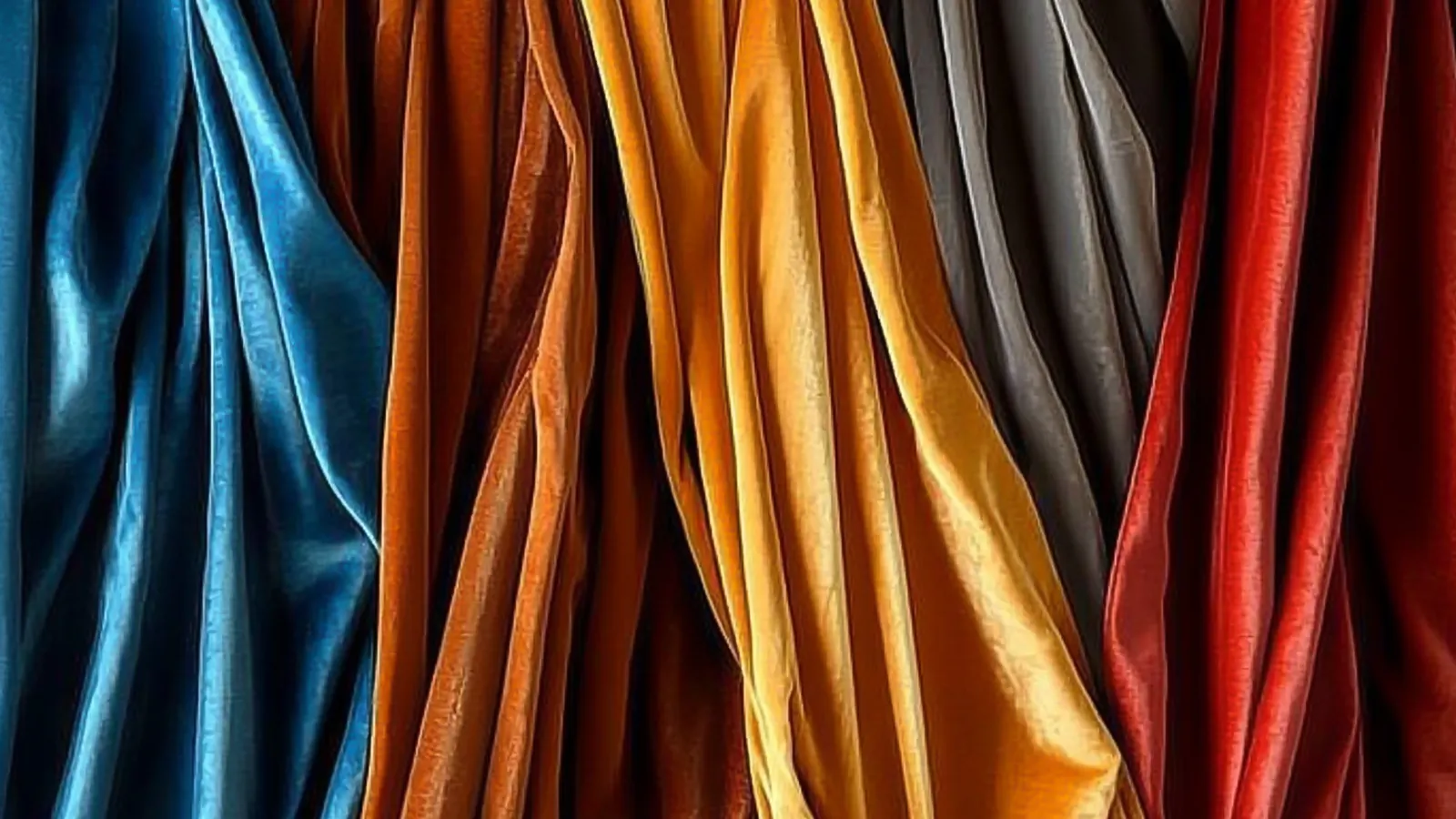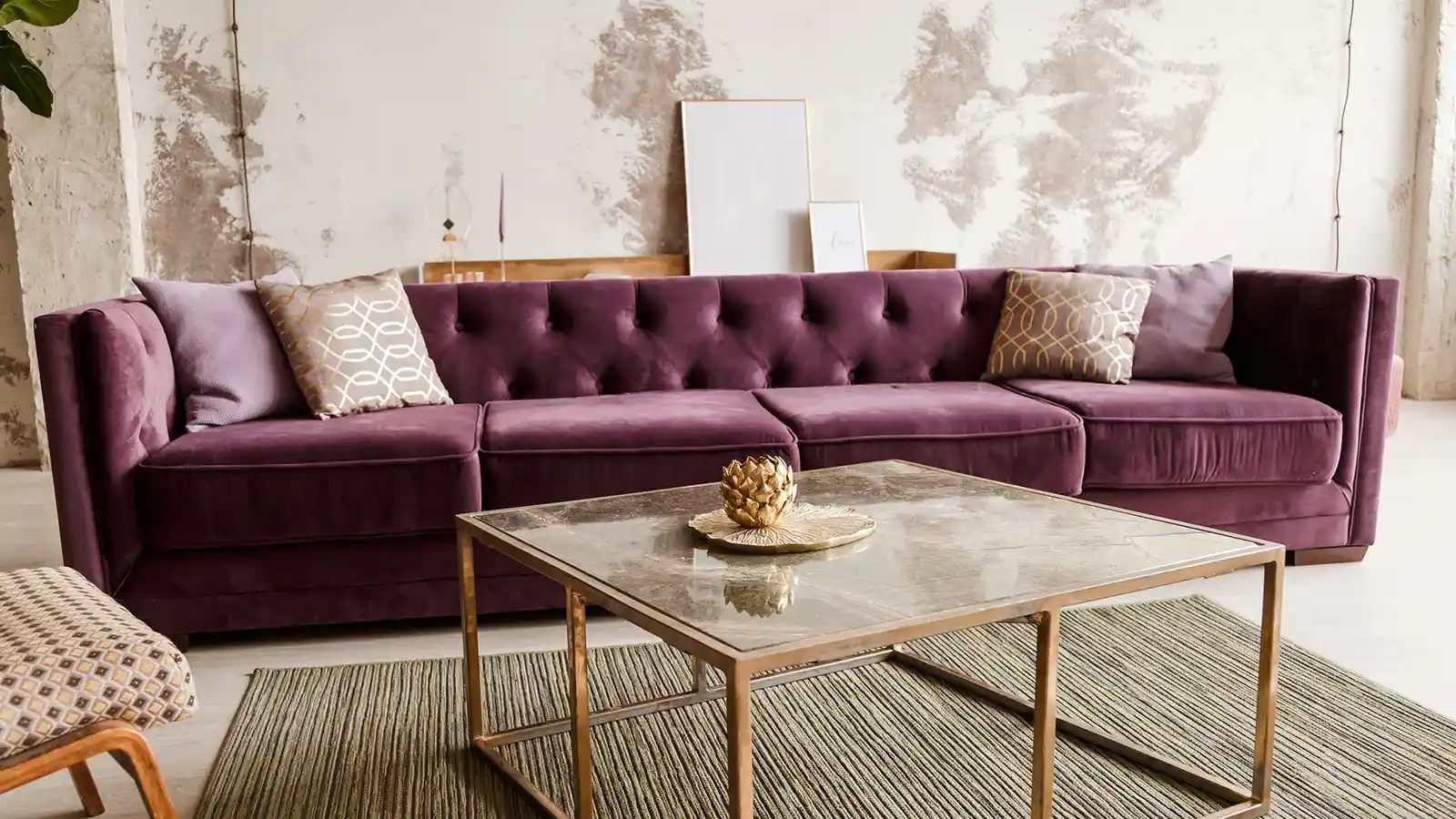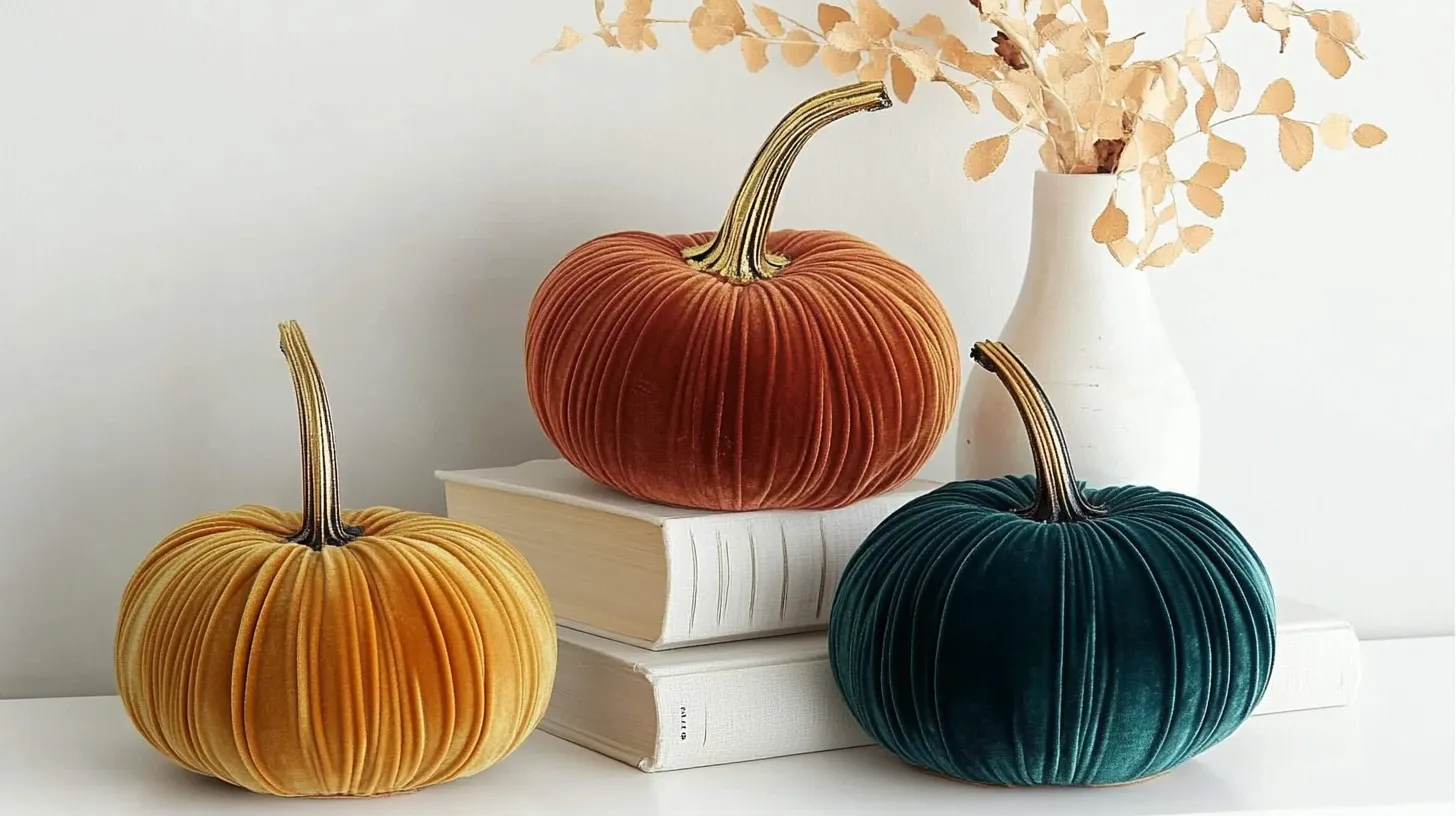Velvet fabric captivates you with its luxurious texture and rich appearance. But what is velvet fabric? It's a woven textile characterized by its dense pile, offering a soft and plush feel. This fabric holds a significant place in textiles due to its unique ability to reflect light, giving it a deep, vibrant color.
Velvet's allure lies in its combination of softness and durability, making it a popular choice for fashion and home decor. Let's learn everything you need to know about velvet!
Key Takeaways
- Velvet is known for its softness and unique ability to reflect light, giving it a rich, vibrant appearance.
- There are various types, including silk, cotton, and synthetic options, each offering distinct qualities for different applications.
- Proper care is essential for maintaining its beauty. Regular cleaning and avoiding direct sunlight can extend its lifespan.
- Velvet is versatile and can be used in fashion, home decor, and DIY projects. It adds elegance and sophistication to any creation.
What Is Velvet Fabric? What Is the Origin of it?

At its core, velvet is a type of woven textile known for its dense pile and soft texture. This unique fabric has a plush surface that feels smooth, making it a favorite in both fashion and home decor.
Velvet's history is as rich as its texture. You trace its origins back to ancient civilizations, where it symbolized luxury and status. The earliest records date to the Middle East, around 2000 BCE. Artisans in this region crafted velvet using silk, a rare and valuable material.
During the medieval period, velvet production flourished in Europe. Italian cities like Venice and Florence became renowned for their exquisite velvet textiles. You might find it interesting that velvet was so prized that only the wealthiest could afford it. Royalty and nobility often adorned themselves in velvet garments, showcasing their wealth and power.
The spread of velvet continued through trade routes. As you explore its journey, you see how velvet reached Asia, where it gained popularity in China and India. These regions adapted the weaving techniques, incorporating their own styles and materials. This exchange of knowledge enriched the diversity of velvet fabrics available today.
In the modern era, technological advancements revolutionized velvet production. Today's velvet uses a range of fibers, including cotton and synthetic options. This evolution has made velvet more accessible now!
Unique Properties of Velvet Fabric
Velvet stands out due to its unique properties, making it a favorite in both fashion and home decor. Its distinctive qualities enhance its appeal and functionality.
Softness and Texture
When you touch velvet, you first notice its softness. This fabric offers a plush surface texture that feels gentle against your skin. The distinctive soft velvet pile contributes to this sensation, providing a tactile experience that few other fabrics can match. The softness makes it ideal for clothing and upholstery, where comfort is a priority.
Sheen and Luster
Velvet captivates with its sheen and luster. The way it reflects light gives it a vibrant, rich appearance. This quality adds depth to its colors, making them appear more vivid and dynamic. The sheen also contributes to its reputation as a luxury material, elevating the aesthetic of any item it adorns.
Durability and Strength
Despite its soft appearance, velvet boasts impressive durability and strength. The weaving process used in its production ensures that the fabric can withstand wear and tear. You will appreciate its durability, especially in items like blinds, where longevity is essential.
Different Types of Velvet Fabric

When exploring velvet, you will discover various types, each offering unique characteristics and uses.
- Crushed Velvet: This type features a crumpled texture, achieved by twisting the fabric while wet. It has a shiny appearance and is often used in fashion and upholstery.
- Panne Velvet: Similar to crushed one, panne velvet is pressed with heavy pressure to create a flattened appearance.
- Embossed Velvet: This type is patterned through heat stamping, which creates raised designs on the surface.
- Stretch Velvet: Contains spandex or lycra, giving it elasticity. It's often used for form-fitting clothing like dresses and leggings.
- Silk Velvet: Made from silk fibers, this is one of the most opulent types. It has a soft drape and brilliant sheen, typically used for high-end fashion and evening wear.
- Cotton Velvet: Less lustrous than silk one, but more durable and affordable.
- Velveteen: Made primarily of cotton, velveteen resembles velvet but is less shiny and has a shorter pile.
- Ciselé Velvet: Features a combination of cut and uncut loops to create a pattern or design in the fabric.
- Chiffon Velvet: A lighter version of traditional velvet. It’s airy and often used for delicate clothing.
- Rayon Velvet: Made from rayon fibers, this type offers a soft texture and a rich appearance similar to silk velvet but at a more affordable price.
Additionally, have you heard about velour? It's a plush knit fabric that resembles velvet but offers more stretch. It's commonly used in casual clothing such as tracksuits and loungewear.
Production Process of Velvet Fabric
Understanding how velvet is made enhances your appreciation for its opulent qualities:
- Weaving Process: This process includes weaving two layers of fabric simultaneously on a special loom. This dual-layer method is crucial for forming the dense pile that characterizes velvet.
- Cutting the Pile: After weaving, cut the layers apart. This step creates the pile effect, giving velvet its plush surface. The pile is typically short, contributing to the fabric's soft texture.
- Finishing Touches: The finishing stage involves brushing and steaming the fabric to enhance its softness and luster. These ensure the velvet has a smooth, elegant feel.
- Dyeing: The final step is dyeing. Immerse the fabric in dye to achieve rich, vibrant colors. Velvet's ability to reflect light enhances these colors, adding depth and richness.
Uses of Velvet Fabric
Velvet offers various uses, making it a versatile choice for various applications. Velvet is often found in fashion, home decor, and creative projects.
Fashion and Apparel

In apparel and fashion, velvet stands out as a symbol of elegance and sophistication. You often see it in evening gowns, jackets, and accessories. Its soft texture and rich colors make it a favorite for designers who want to create statement pieces.
Velvet drapes beautifully, enhancing the silhouette of any garment. When you wear velvet, you experience a sense of luxury and style that few other materials can match.
Home Decor and Upholstery

Velvet plays a significant role in furnishings and upholstery home settings. You might choose velvet upholstery for sofas, chairs, and cushions to add a touch of opulence to your living space. Its durability ensures that it withstands regular use while maintaining its plush appearance.
Velvet curtains and drapes also provide excellent insulation, keeping your home cozy and stylish. The fabric's ability to reflect light enhances the ambiance of any room, making it a popular choice for interior designers.
Craft and DIY Projects

For craft enthusiasts, velvet offers endless possibilities. You can use it in DIY projects to create unique items like pillows, wall hangings, and even holiday decorations. Its rich texture adds depth and interest to any craft, making your creations stand out.
How to Care for Velvet Fabric
Velvet requires special attention to maintain its luxurious appearance and texture. By following these care instructions, you can ensure that your velvet remains beautiful and durable.
- Regular Cleaning: Dust and dirt can accumulate on velvet, affecting its sheen. Use a soft brush or a lint roller to gently remove surface debris.
- Spot Cleaning: For small stains, act quickly. Blot the area with a clean, damp cloth. Avoid rubbing, as this can damage the pile. If necessary, use a mild detergent diluted in water. Test it on an inconspicuous area first to ensure it doesn't affect the color.
- Professional Cleaning: Consider professional dry cleaning for larger stains or deep cleaning. Professionals have the expertise to handle velvet safely.
- Avoid Direct Sunlight: Prolonged exposure to sunlight can fade velvet's vibrant colors. Position velvet items away from direct sunlight to protect them.
- Proper Storage: When storing velvet garments, hang them on padded hangers to prevent creases. For smaller items, like accessories, store them in breathable fabric bags.
- Steam for Wrinkles: If your velvet item develops wrinkles, use a steamer to gently remove them. Hold the steamer at a distance to avoid saturating the fabric. Avoid using an iron directly on velvet, as it can crush the pile.
DIY and Sewing Ideas Using Velvet Fabric
Velvet offers endless possibilities for your creative projects. Here are some exciting ideas to inspire your next velvet creation:
- Pillow Covers: Use velvet to create elegant covers. The soft texture adds a touch of luxury to any living space.
- Clothing: Sew a velvet dress or skirt for an elegant look. Velvet blazers or jackets can also add sophistication to your wardrobe.
- Accessories: Create headbands, scrunchies, or hair bows using velvet. These small accessories can add a pop of color and texture to your outfit.
- Bags and Pouches: Design clutches, handbags, or small pouches with velvet for a chic look.
- Curtains: Velvet curtains can add warmth and richness to any room. They also help in blocking out light and sound for a cozier environment.
- Upholstery: Reupholster a chair or a sofa with velvet to give it a new, luxurious look.
- Table Runners and Placemats: Use velvet to make table runners or placemats for festive occasions or everyday elegance.
- Holiday Decorations: Create ornaments, stockings, or tree skirts using velvet for a festive touch during the holiday season.
- Quilts and Throws: Incorporate velvet into quilts or throw blankets for added texture and warmth.
- Wall Art: Use velvet as a backdrop for framed art pieces or create unique wall hangings.
Conclusion
In conclusion, velvet is a timeless symbol of luxury, known for its softness, vibrant colors, and durability. With roots in ancient civilizations, it has evolved into a versatile choice for fashion and home decor.
Proper care can maintain its beauty for years, making velvet an ideal option for adding elegance to any setting or project. Embrace velvet's charm to enhance your style and surroundings.
FAQs
What makes velvet fabric unique?
Velvet stands out due to its dense pile and luxurious texture. Its ability to reflect light, giving it a rich, vibrant color, makes it a popular choice for both fashion and home decor. This unique combination of softness and sheen makes velvet a popular choice for both fashion and home decor.
Is velvet fabric environmentally friendly?
The environmental impact of velvet depends on the materials used. Natural fibers like silk and cotton require significant resources, while synthetic fibers like polyester contribute to fossil fuel consumption. Opting for eco-friendly velvet options, such as those made from organic or recycled materials, can reduce environmental impact.
How much does velvet fabric cost?
The cost of velvet varies based on factors like material composition, quality, and brand. Silk velvet tends to be more expensive, while cotton and synthetic velvets offer more affordable options. Market trends and purchasing options also influence prices.


0 comments